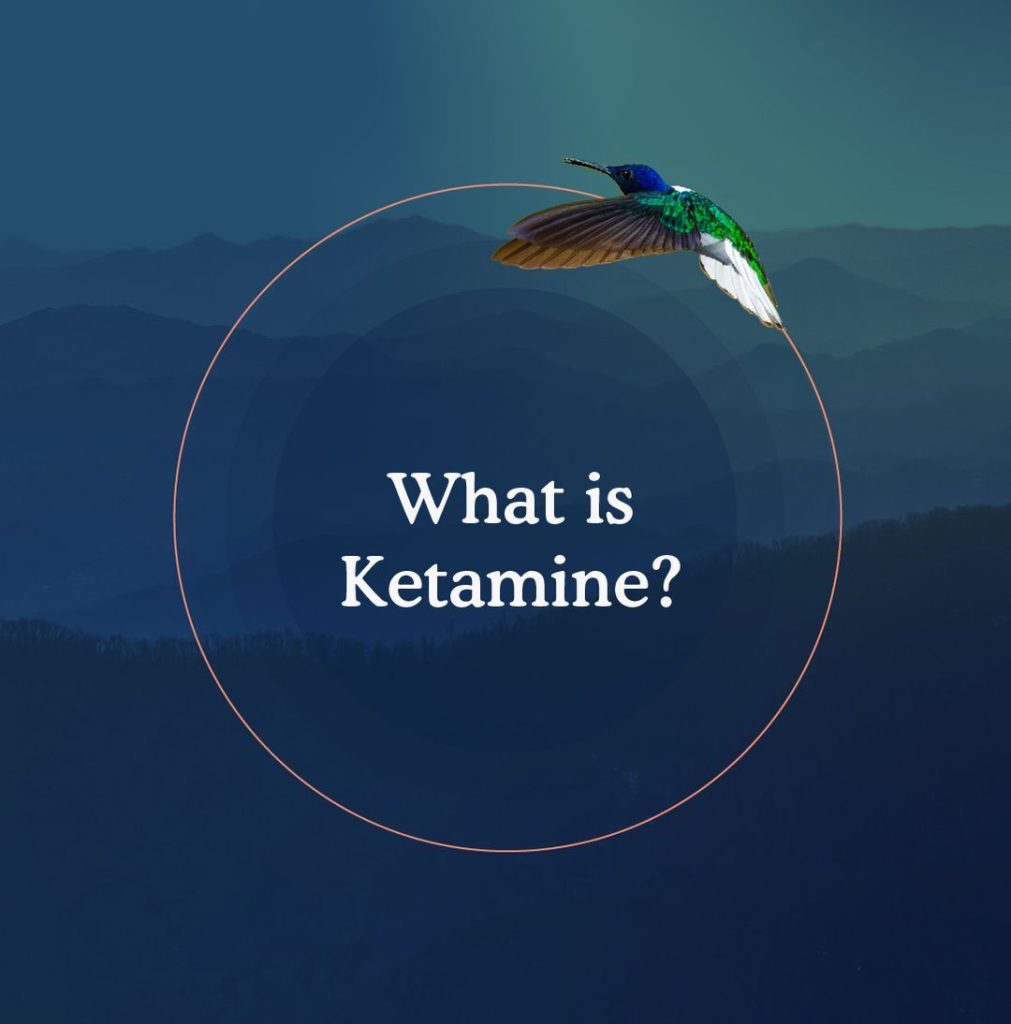
What is ketamine?
Ketamine- what is it? Ketamine has a long and interesting history and is well-known for its use as a dissociative anesthetic. It is derived from phencyclidine (PCP) and was synthesized in the early 1960s and approved by the FDA in 1970 and marketed as a safer alternative to existing anesthetics. Ketamine remains a popular choice of anesthetic agents today in a variety of patient populations and clinical settings because it doesn’t adversely affect breathing like most anesthetics and has such an excellent safety profile.
Dissociative drugs can distort perceptions of sight and sound and create feelings of detachment from reality and/or dissociation from one’s self and surroundings. There is some disagreement among clinical and academic communities regarding whether ketamine should be classified as a psychedelic, primarily because of which receptors it works on in the brain and what mechanism of action is responsible for ketamine’s positive benefits in mental health disorders. While it doesn’t work the same way chemically as classical psychedelics, it does, however, cause similar subjective psychedelic-like effects and experiences. Ketamine is the only legal psychedelic drug in all jurisdictions where Field Trip Health operates and as such, is the psychedelic drug that we use in our clinics.
What are the different forms of ketamine?
Ketamine is available in several different forms and can be safely administered through multiple routes: intravenous (IV), intramuscular (IM), oral, sublingual, intranasal, rectal, subcutaneous and epidural. Each route of administration has differences in bioavailability (how much of the drug is absorbed and used by the body), onset of action (how long it takes the medication to start working), and practicality. Intravenous ketamine, for example, has a bioavailability of 100% with an onset of action within seconds. Bioavailability of IM ketamine is 93% with an onset of action in 1-5 minutes. Intranasal ketamine has a bioavailability up to 45% with onset of action in approximately 10 minutes and oral ketamine has a bioavailability of up to 29% with onset of action in 15-30 minutes. Depending on the form of ketamine used, the effects can last from 5-10 minutes (IV) to 30 mins to 2 hrs (IM) and 3+ hours (oral).
Why use ketamine for therapeutic purposes?
Ketamine is useful as a catalyst and a therapeutic tool to help clients access their inner healer. Clients play an active role in their treatment and are guided through emotional breakthroughs so that they can dive deeper and get past any plateaus or roadblocks that they’ve been struggling with.
Ketamine reduces the functionality of the default mode network (DMN). The DMN is made up of the areas in your brain that are active when your mind is in a passive state such as when you’re daydreaming. At low doses, it can relax the mind and allow people to have a break from their normal ways of thinking. By breaking these rigid structures of thinking and any preoccupations or ruminations, ketamine can help with mental blockages that cause individuals to experience anxiety and/or depression.
Ketamine works on glutamate, a predominant neurotransmitter in the brain, which is responsible for sending signals between nerve cells and plays an important role in learning and memory. Another important way ketamine works is by enhancing neuroplasticity in the brain which means that it increases neural pathways and connections so that there are more receptor sites in your brain that are available to receive input. This enhanced neuroplasticity is key to developing new insights and perspectives that help clients to reframe negative thoughts, feelings or situations and can lead to remarkable changes in mindset and behavior.
The majority of the research on ketamine for mental health concerns has been for depression. As its’ has gained popularity and numerous research studies has demonstrated its efficacy in treating depression – including treatment resistant depression – its application for a range of psychiatric conditions has been explored and shown to be effective in:
- Social anxiety and generalized anxiety disorder
- Post-traumatic stress disorder
- Bipolar disorder
- Obsessive-compulsive disorders
- Substance use disorders
- Eating disorders
- Postpartum depression
Is ketamine safe to use?
When used in a clinical setting, ketamine is a very safe drug. As with any medical treatment, clients should consult with their healthcare provider to weigh the risks and benefits and rule out any potential contraindications prior to starting treatment. Because ketamine can cause mild, temporary increases in blood pressure and heart rate, it is not recommended for individuals with uncontrolled hyperthyroidism and/or certain cardiovascular conditions such as uncontrolled hypertension, arrhythmias, or aneurysms. Ketamine is not recommended in pregnant or nursing individuals and is contraindicated in people with a history of hypersensitivity or allergic reaction to ketamine and those with schizophrenia.
Side effects are usually mild and self-limiting and if present, often resolve without intervention in a few hours. Potential side effects most commonly experienced are: drowsiness, nausea, vomiting, headache, lightheadedness/dizziness, blurred vision and double vision.
Ketamine has a wide therapeutic window and the dose needed for therapeutic purposes is much smaller than what would be needed to trigger an overdose. Although overdosing can occur when ketamine is being abused recreationally and individuals are using a dosage of ketamine several times larger than a therapeutic dose, when ketamine is administered by a licensed medical professional for medical purposes, overdose is extremely rare.
Learn more and consult with our clinicians on an introductory consultation here.